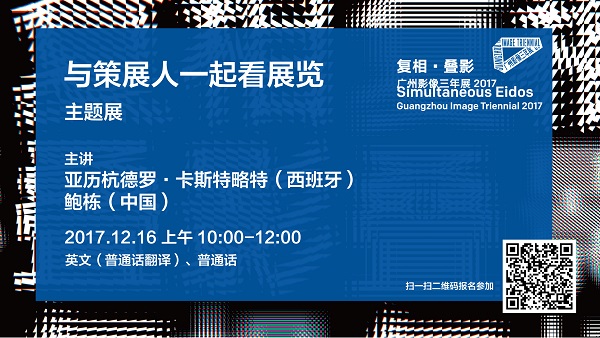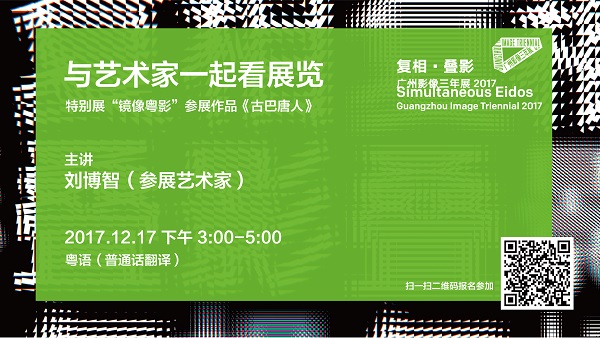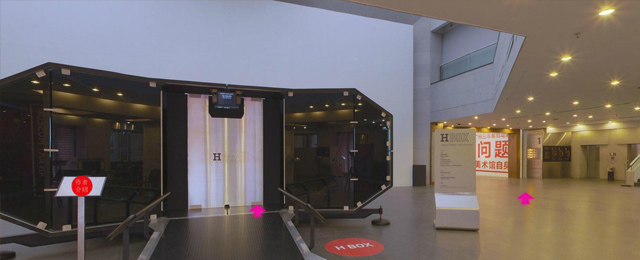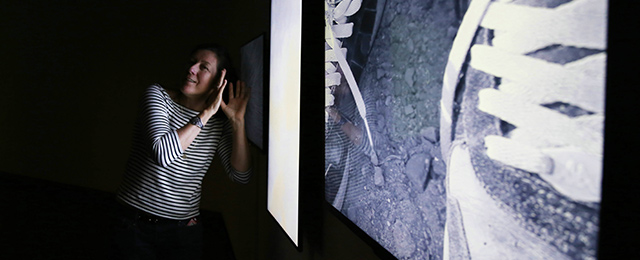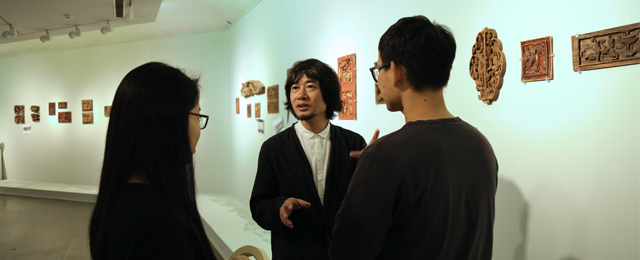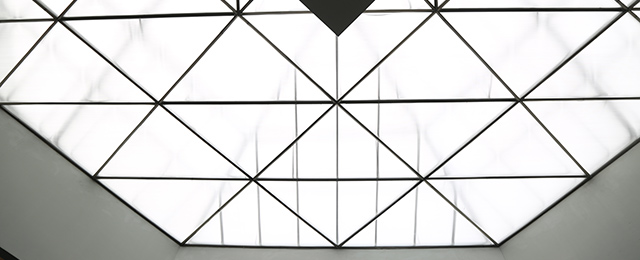From Photo to Image— Education Activities of Guangzhou Image Triennial 2017
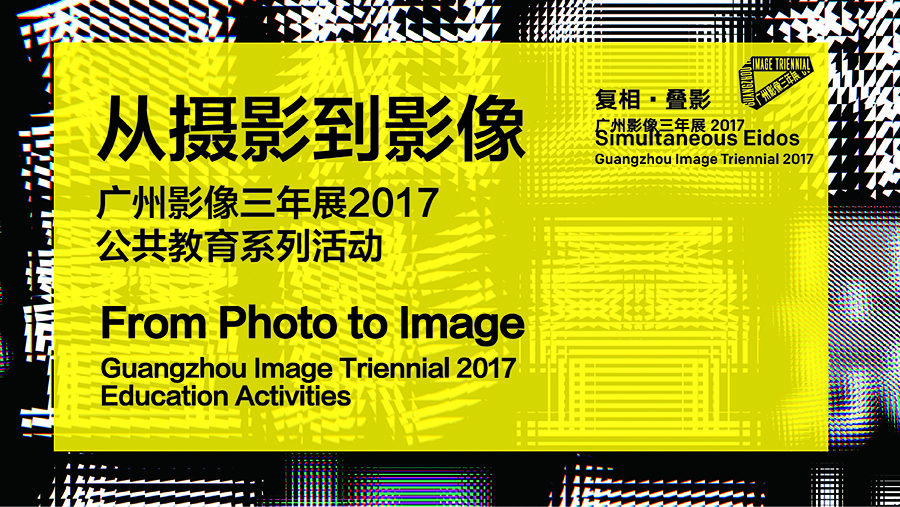
From the camera obscura in the era dominated by painters to the photography in the 19th century, people have been trying to capture the chemical reactions of different “lights”. Nowadays, the element “light” has transformed into digital image. Such fission process has not only greatly extended the boundaries of photography concept, but has also gradually infiltrated the construction of other media forms and modern life and turned into an aesthetic experience for sharing and exchange. From bulky cameras to portable digital devices, from complicated photographic processing to ready-to-use print technology, from the distribution of physical photos to the sharing of electronic photos, from the two-dimensional pictures to three-dimensional and moving images….the development of technology has not only affected our way of life, but also changed the way of watching. In line with the curatorial ideas and exhibited works of Guangzhou Image Triennial, we selected three key words—“watch”, “capture” and “disseminate”—as the theme of the public education event of the exhibition. In the meantime, we developed diversified navigation means and a series of educational activities for the public, such as Visit the Exhibition Together, Art Museum Courses, Workshop for Artistic Experience, online interaction and so on.
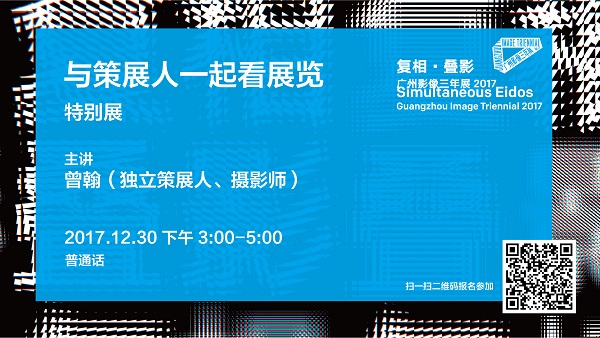
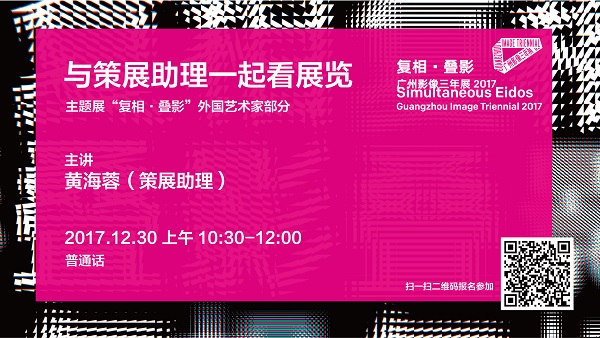
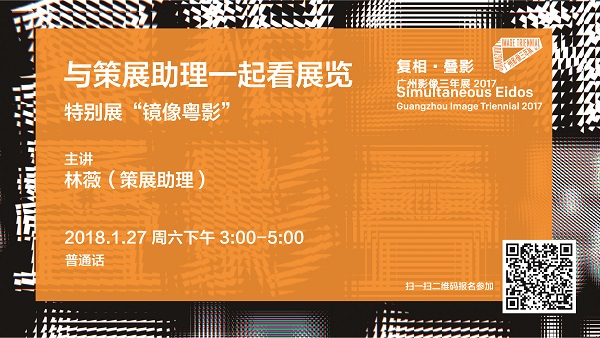
Themed Activities
Watch: Guangzhou, too beautiful to be watched enough
“Watching” is a process of great fun. The photographer is watching. So is the audience. In modern life where images are everywhere, how do we select a particular perspective to watch the people, things and scenery around us? How do artists watch this world? Could we explore more possibilities through studies of artists’ works? We invited local photographers and artists to share with the public the collection of photographic works on the theme of “Guangzhou” and explore how to “watch” the city and how to better know ourselves through “watching”. The event shall be conducted in the forms of workshop, display of works and online interactions.
+Workshop
+Display of works
+Online interactions
Capture: From objects to shadows, capture the moments
Since the invention of photography, numerous attempts have been made to capture “light” and retain the shadow of “light”. Some artists went further and tried to create images directly with light. Different from common photographic methods, making “photograms” needs no use of a camera. By virtue of the interactions between lights and objects, a picture could be produced on a light-sensitive paper. The artist Jiang Pengyi put the luminescent fireflies in courtship in a dark room with photographic film inside, so that their luminous traces of motion are recorded on the film. That’s how the series of Dark Addiction were produced. The artist Xie Guixiang burned the things left behind by her deceased grandmother while fixing the shadows on the photographic paper. She preserved the memorial ceremony by means of “photogram”. Between the medium and the concept, artists have created art works in their own way and have constantly expanded the definition of art images. To know about the collisions between traditional technology and new concepts, we invited professional photographers to introduce to the public the traditional techniques for photography and photographers’ or artists’ application of these techniques.
+Play the video of making photograms and photographic processing
+Workshop
+Secrets about the darkroom
Capture: 3D images, “more real” images
The seemingly novel technique of 3D image isn’t something new. Even before the invention of the daguerreotype by French photographer Louis Daguerre in 1839, British physicist Charles WHEATSTONE (1802-1875) invented the stereoscope for viewing 3D images in 1838 and published an article in 1852 to illustrate the theory of 3D photography. Researchers learned that while viewing the world, people could see independent left-eye and right-eye views. Both views are two-dimensional, and then the processing of brain could produce a three-dimensional illusion with depth and stereoscopic impression. Through the traditional 3D photos in the exhibition, we wish to uncover the secret of 3D photography to the public. With the help of digital technology, we’ve applied 3D techniques to the exhibits of John Thomson, Lai Afong, Ho Fan and other artists so that the visitors could “watch” the scenes “as if in person”. Moreover, we designed a workshop in combination with Chen Shaoxiong’s photos of the streets in Guangzhou and devices to explore with the visitors the multiple possibilities of changing from 2D to 3D scenes.
+3D images: “Cantonese Photography Mirrored”
+Workshop
+Creative production of VR glasses with carton
Disseminate: Production, consumption and dissemination of images in the digital age
The invention of smartphones has made it increasingly convenient to shoot, create and share photos. The artist Penelope Umbrico created Range: of Masters of Photography by re-phtographing images of mountains found in social media through the filters of camera apps. She spent a lot of time trying to reach out to the authors to get the right to use these images. Therefore, even if we didn’t take pictures, we can find enough images online for recreation. By the same way, we could make use of the artist Yang Yuanyuan’s machine to create an image of “Traveling around the world” in the exhibition hall of the museum and share the image on “WeChat Moments”. With the focus on the displayed works related to social media, we invited scholars to uncover the secret about the relationship between social media and the production, consumption and dissemination of images.
+Sharing session
+Photo studio of romantic trips
+Jigsaw App
Navigation
Diversified access to a guided tour
1. WeChat (reserve space for two QR codes)
2. Tours guided by workers on schedule (Please refer to the announcement on the site for the schedule).
Visit the Exhibition Together
Visit the exhibition together with curators: themed exhibition “Simultaneous Eido”
Speaker: Alejandro Castellote, Bao Dong
Time: 1000hrs—1200hrs on Saturday, December 16th, 2017
Visit the exhibition together with curators: special exhibition “Cantonese Photography Mirrored”
Speaker: Zeng Han
Time: 1500hrs—1700hrs on Saturday, December 30th, 2017

Visit the exhibition together with artists: Cuban Chinese
Speaker: Liu Bozhi
Time: 1500hrs—1700hrs on Sunday, December 17th, 2017
Visit the exhibition together with curatorial assistants: themed exhibition “Simultaneous Eido”
Speaker: Huang Hairong
Time: TBD

Visit the exhibition together with curatorial assistants: special exhibition “Cantonese Photography Mirrored”
Speaker: Lin Wei
Time: TBD

Art Museum Courses
The art museum courses are conducted by public educators, school teachers and art teachers to popularize art knowledge and explore the way of appreciating art. For the schedule of the courses, please go to the official website of Guangdong Museum of Art.
For details of the above activities, please go to the official website and official WeChat account of Guangdong Museum of Art.
Opening hours: 9:00-17:00 from Tuesday to Sunday (closed on Mondays),No admission after 16:30
Address: 38 Yanyu Road, Ersha Island, Yuexiu District, Guangzhou, Guangdong
Tel: 020-87351468
Free Admission: Audiences may visit by presenting valid certificate
Group Visit: Please make reservation by telephone two days in advance for any group with more than 10 people and visit the Museum at the agreed time by producing the confirmation message.
相关文章




